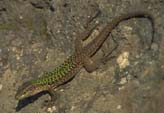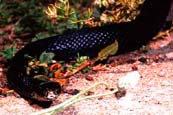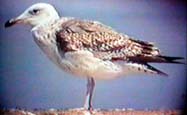 The
animal landscape of the Aeolian Islands
The
animal landscape of the Aeolian Islands
The formation of the main volcanic Aeolian
arch took place during
the last 500,000 years (second the last datings made by
volcanologists) and, unlike many Mediterranean islands,
total autonomy in relation to land nearby, with which the
archipelago seems not be ever came into contact area. The
populations of plants and animals that are hosted in Aeolian
are the
result of processes of colonization (active or passive) of
the islands, during the past 7000 years.
The number of vertebrates is not large, but includes some
interesting endemics. The quercino (Eliomys quercinus)
in Lipari is a unique subspecies (ssp. liparensis),
characterized by greater size than the continental
populations. In some smaller islets survive small
populations of the lizard of Aeolian (Podarsis
raffonei), very darkest of common lizards in the rest of the
archipelago, this species probably in the past was also
present on other islands, where it was eliminated as a
result of competition with other species that now prevails
at Aeolian, the lizard of the fields (Podarsis sicula).
There are no poisonous snakes, but only the dark green snake
(coluber viridiflavus) which, indeed,
is useful to man, mainly basing his diet on mice and insects.
Other Reptiles quite common are the two geckoes (Tarentola
mauritanica) and (Hemidactylus turcicus), frequent
artificial at the light sources during the summer evenings,
hunting moths and other insects.
Among mammals remember the dormice (Glis glis), who lives in
chestnut that occupies the summit of the crater of the Fossa
delle Felci, in Salina; it is a species uncommon in the smaller Italian
islands and certainly introduced by humans in age
history.
|
 |
 |
 |
|
lizard of the fields
(Podarsis
sicula) |
dark green snake
(coluber viridiflavus) |
geckoe
(Hemidactylus turcicus) |
Among the birds alike, the more "visible" are
the buzzard (Buteo buteo) and the
kestrel (Falco Tinnunculus); the
considerable presence of imperial crow (Corvus
corax), whose population density reach
truly extraordinary in Lipari and other
islands of the archipelago. On the western
coast and in front cliffs, during the
spring months, instead populous nesting
colonies of real Mediterranean gull (Larus
Cachinnans). The most interesting is
without doubt the falcon of the queen
(Falco eleonorae), rare Falconide
Mediterranean and authentic "specialist" of
the small islands. This is the only predator
of our fauna that live in colonies, located
on the western cliffs of some islands of the
archipelago, where implements strategies
spectacular community hunting against
migratory pass during late summer.
|
 |
 |
 |
|
the kestrel
(Falco Tinnunculus) |
real
Mediterranean gull
(Larus
Cachinnans) |
The
falcon of the
queen
(Falco eleonorae) |
Remarkable in general is the diversity of
birds, which in addition to sedentary
species include a large number of migratory
species, the presence of salty pond Punta
Lingua, in Salina, considered a Special
levelProtection Area at Community, offers at
shorebirds a environment eligible to stop
during spring and autumn